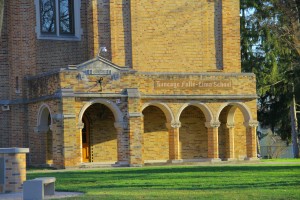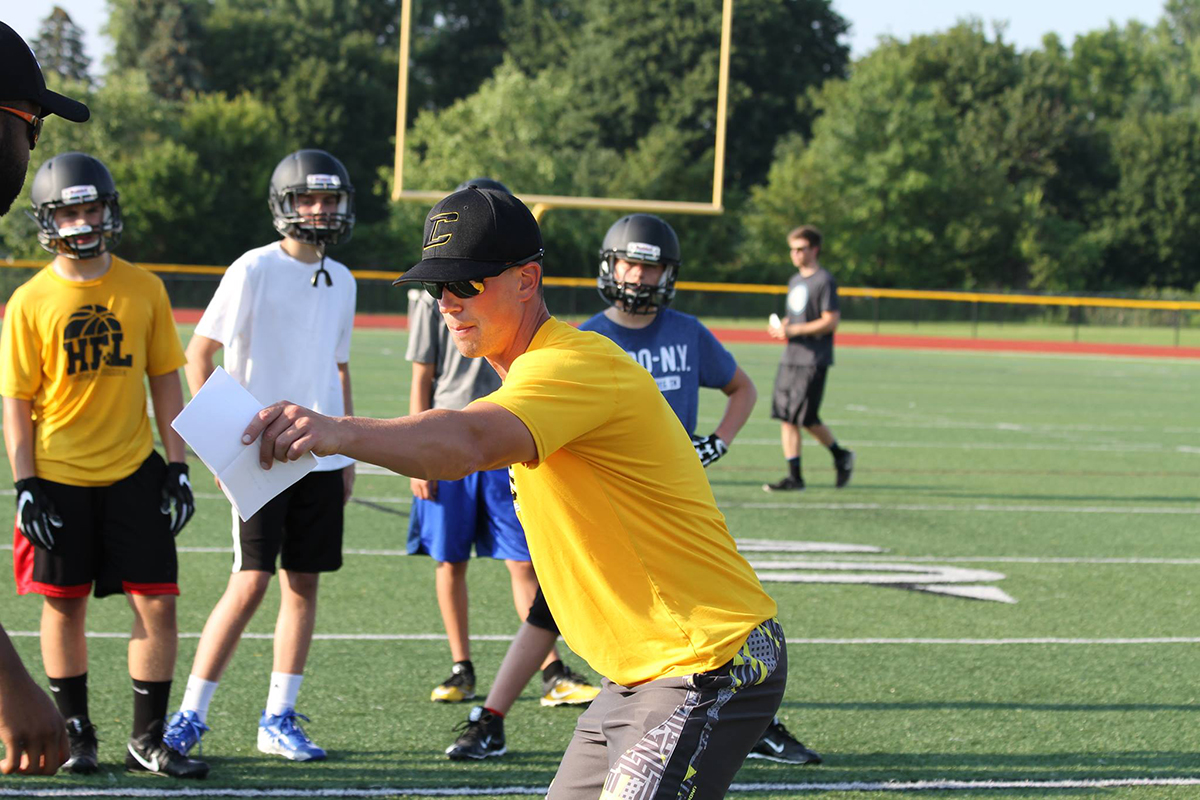One of the greatest changes that has occurred in public education across the nation is the implementation of the Common Core State Standards. These standards have had a profound effect, not only on the students’ learning under the new curriculum, but on teachers, education leaders, state officials and members of the community. Many people know of Common Core, but don’t know the history, the cause, or the involvement of education personnel with the process. Before the relationship between Honeoye Falls-Lima School District and Common Core can be explored, the basics of Common Core must be understood.
Common Core is a series of reforms implemented within public school education across the United States. These reforms are aimed at creating a uniform set of standards that public schools have adopted into their curriculum. There was a lack of clarity and difference between the curricula of states that was taking a noticeable toll on the test results of students. College Board, an organization that administers tests that dictate a student’s academic college readiness, reported noticing a trend in SAT and AP scores from states with stronger curricula than states with lesser curricula. Despite the identical natures of the tests, certain regions of the country were repeatedly scoring higher than others. This reality was distressing to state and school leaders, and in November of 2007 state chiefs met to discuss developing common standards during an Annual Policy Forum in Columbus, Ohio. From there, an advisory group composed of governors, state education chiefs, and education researchers guided a report that recommended states should “…upgrade state standards by adopting a common core of internationally benchmarked standards in math and language arts for grades K-12 to ensure that students are equipped with the necessary knowledge and skills to be globally competitive.”
Common Core consists of two aims. First, college and career readiness; these standards were the first to be developed and later incorporated into the standard curriculum. College and career readiness is to ensure that all students are prepared for a future outside of an educational institution, with a focus on nonfiction and analytical text and practice. The second aim is a series of expected standards for all public schools from the elementary to the high school level. These standards were to be simplified and more uniform from previous standards. Both of these aims strive to create the best possible curriculum for students. Many of the standards were shaped and guided by commentary and criticism from parents, teachers, school administrators, and other people invested with education policy.
Teachers were a huge component in the development of Common Core standards; they served on Work Groups and Feedback Groups for ELA and math standards. The National Education Association (NEA), the American Federation of Teachers (AFT), the National Council of Teachers of Mathematics (NCTM), the National Council of Teachers of English (NCTE), and other organizations were critical groups that brought teachers together for constructive feedback on the standards. Teachers served as members of state teams that met regularly to make changes on drafts of the standards and provided input on Common Core State Standards during two public comment periods.
Common Core State Standards began to be voluntarily adopted by states between the period of 2011 and 2012 through the regular process of accepting standards; Honeoye Falls- Lima school district began the process of implementing Common Core State Standards into its curriculum in 2011. Mrs. Mary McNamara, K-12 Curriculum Coordinator for the Honeoye Falls- Lima school district, describes the difference between the old standards and the new Common Core standards: “The last standards that New York State published were in 2005. In ELA alone there were hundreds of standards. There were so many; the sheer volume of them was overwhelming.” McNamara went on to describe how creators of the Common Core standards strove to simplify the academic model. “They really tried for much more focus, a much clearer number of standards.”
The first year of testing with Common Core revealed the challenge of the new curriculum. “We did see, and the state of New York warned everyone, that because these standards were much more rigorous, that there may be an implementation dip. And we did, across the state,” McNamara said. “Students that typically scored a four or five on a one-to-five grade scale were scoring threes.” Since then, the school district has made remarkable progress and achieved great success in many grade levels compared to similar school districts in the area. “New York State categorizes school systems by their size, demographics, and economic wealth of the population. By those three factors, Honeoye Falls-Lima is grouped with schools such as Penfield, Spencerport, Victor, and others. We tend to look at their data, because there are a lot of similarities between our school districts and their school districts, and we are ranked within the county. Last year, HF-L High School ranked in the top three schools out of the 67 districts in the area.” That was a major reason for the school district to earn the 2016 Blue Ribbon Award, recognizing HF-L as one of the best schools in the nation. “That really acknowledged the hard work that all the students do, and the very hard work that all the teachers do,” Mary McNamara said.
Although Common Core is still in its youth, its effects are noticeable. “Teachers are noticing stronger skills than they’ve seen before,” Mary McNamara stated. “We’re seeing better thinking skills, stronger vocabulary, and great problem solving skills. Writing and critical reading capabilities have improved as well.” A greater consistency has been noticed in Regents test results, too.
There has been much controversy surrounding misconceptions about Common Core; one such misconception is that state governments have a firm control of curriculum taught in public school systems. Mary McNamara says this is not the case: “A teacher in our mathematics department, Mrs. Kelley, is one of our teacher leaders known as a CARE (Curriculum Articulated Resource Educator). I provide Mrs. Kelley with all the data the state provides to me, and she and our teachers spend a great deal of time looking at that information, finding ways to tweak their instruction and look for resources. The Common Core is just standards; the teachers are still responsible for developing the curriculum into a syllabus. It is still local; that has always been a part of Common Core in the state of New York.”
An important fact to remember is Common Core is still very new. “When Common Core was published, it was the first draft. It went through many revisions, but it was the first time something like this has been attempted. Since then, from the feedback across the state, New York State held a series of workshops and called in educators, as well as parents, to make modifications to the standards. We were very fortunate to have a representative from HF-L (Mrs. Kelley) attend and facilitate the group that looked at Algebra II standards.” The curriculum coordinator explained that the implementers and creators of Common Core continue to rely on public feedback and commentary to shape and further develop standards. “All of the standards, both in ELA and math, were reviewed this summer by committees of education experts and community members, and they have published a draft that has been made available to all the schools and communities to give feedback on Common Core.”
Looking to the future, curriculum coordinator Mary McNamara says Common Core standards will continue to be developed within the school district, although these standards are certainly not set in stone. “The Common Core made very significant changes, I believe,” McNamara said. “Changes for the good. The standards created a curriculum with greater clarity and greater rigor. The goal of creating consistency between the states was a necessary change. But, like anything, the first time something is tried, it won’t be perfect. New York State has made changes, and continues to make changes, and hopefully it will be better going into the future.”








